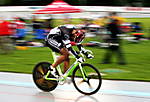I noticed the Idler wheel holes don't line up front to back, is this normal? I can't see these details in your pics.
I like the Gunze early sprockets, nice detailing.
Looking great!
Paul







Back again Bill, what MK sprocket housing did you use, 12? Also did you have any issue with the sprocket halves not seating properly all the way? On mine there's a small gap between the halves...I did check the track links and it might be really tight fit with no gap so maybe a kit issue after all.
I noticed the Idler wheel holes don't line up front to back, is this normal? I can't see these details in your pics.
I like the Gunze early sprockets, nice detailing.
Looking great!
Paul

















Yet another nice one. I can't wait to apply some techniques you use to my current build I'm starting tomorrow. Hopefully this young guy can keep up with the likes of you.
 As for "young guy can keep up" I'm not exactly "old" at 33 but then I guess that's all relative! I'm sure you'll do just fine with your project too and I appreciate the kind words.
As for "young guy can keep up" I'm not exactly "old" at 33 but then I guess that's all relative! I'm sure you'll do just fine with your project too and I appreciate the kind words. 



Thanks Jim!Quoted TextYet another nice one. I can't wait to apply some techniques you use to my current build I'm starting tomorrow. Hopefully this young guy can keep up with the likes of you.
Sean, glad this one's helpful for you and look forward to seeing yours as well.As for "young guy can keep up" I'm not exactly "old" at 33 but then I guess that's all relative! I'm sure you'll do just fine with your project too and I appreciate the kind words.





















































Thanks for sharing your build Bill. Been checking the progress -- anxiously awaiting when you'd start painiting the Tropen scheme. For the disruptive pattern: is it more of smaller patches than larger ones? Have the same DML kit in the stash and plan to do a similar scheme as well. Cheers -- Tat






Wow, this is another impressive build Bill. This oldy is looking fantastic.
The front MG (not the coaxial one) is correct one? I've used few times the RB model MG 34 barrel (which I think is the same as the one you used from armorscale) not really knowing id it's correct for a tank....
wait to see more
spit

Thanks for the comments Tat! As for the pattern, the orders simply say 1/3 vs. 2/3, so that's what I tried to keep in mind in terms of the coverage and size of the pattern. There's some leeway for creative license as a result.







 |